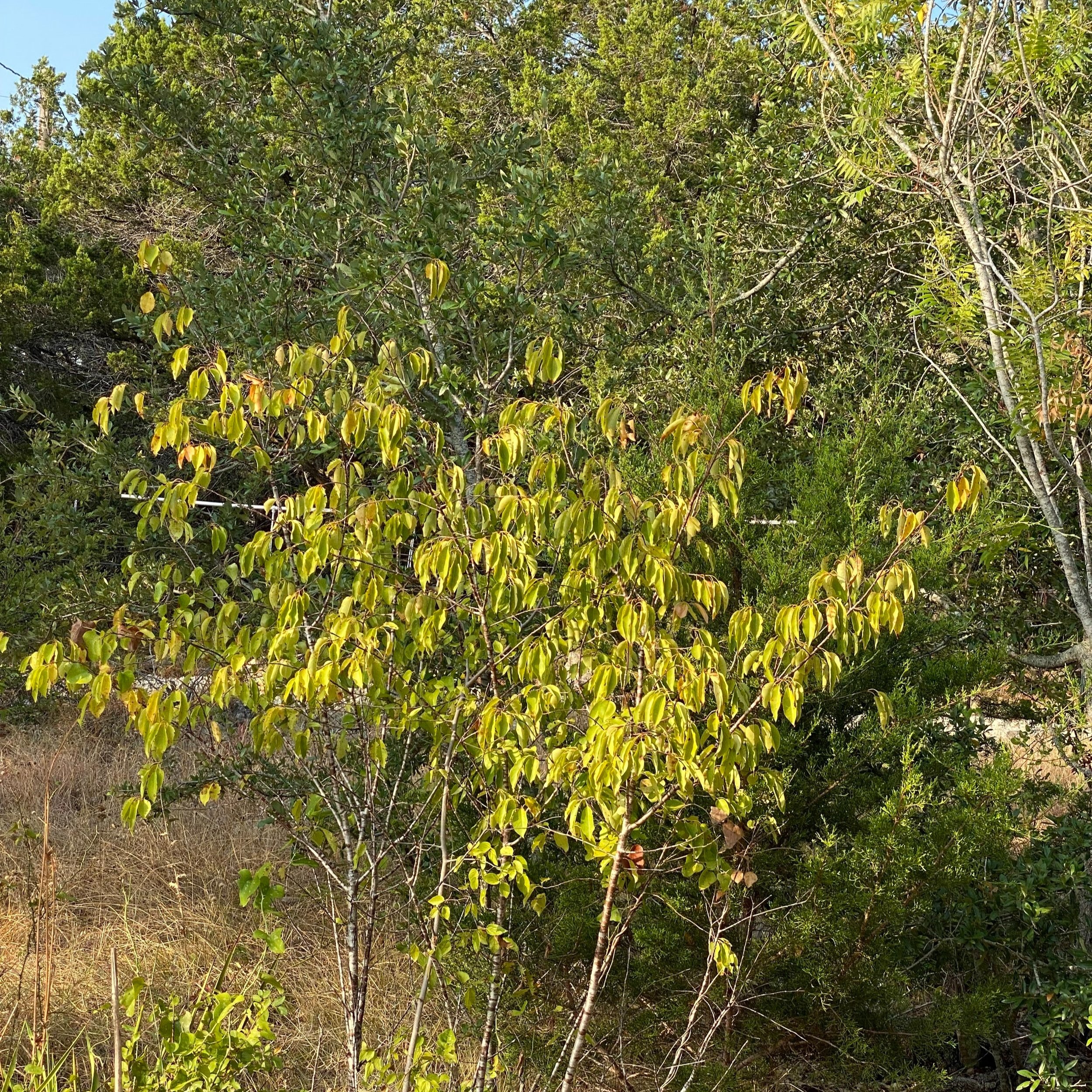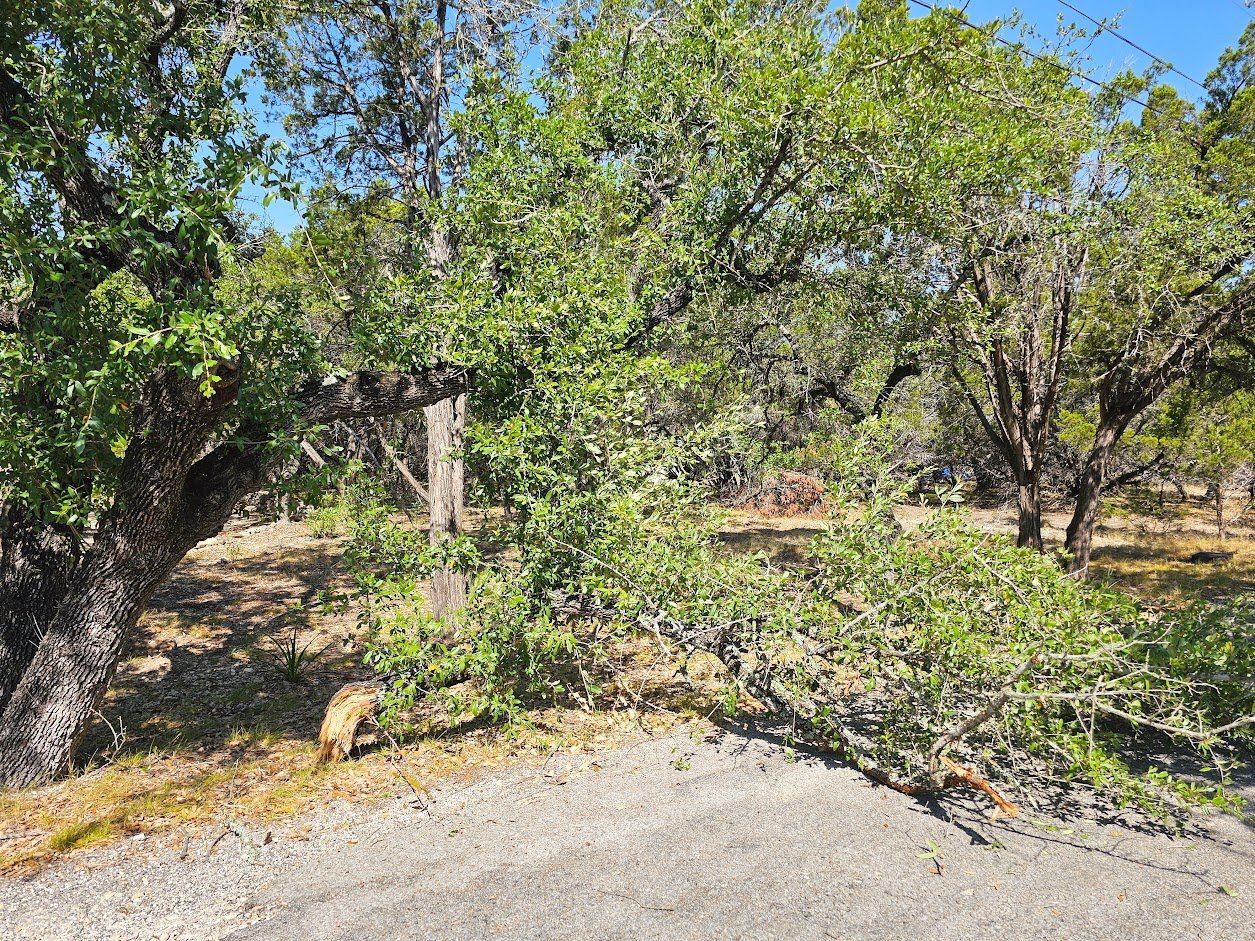Documenting Drought
Mimi Cavender and Hays County Master Naturalists
We still feel surprise that it may actually be here: the long predicted worsening patterns of drought, heat, violent weather, wildfire, and floods; the daily loss of property, history, natural beauty, human life. World wide, we’ll act now, because we finally must. Hays County Master Naturalists are uniquely positioned to look out over our little piece of heaven and document this brave new world.
The summer of 2023 has been two months of unbroken 100°+ temperatures, baked bleary-eyed skies, air fried vegetation. Grass—native or not—crunches under our shoes. Dogs are rushed to the vet for burned footpads. Songbirds droop on deck rails, their beaks hanging open—cicadas do the singing. Early mornings start near 90° and climb fast to that thick choking blast when you open the door. With Stage 4 Water Restrictions keeping the garden hose coiled, there’s no hope now of saving all that stuff out there. Listen…you can hear it all going crispy, vascular systems collapsing, across the yards and landscapes of Texas. When we’re not mourning it, we’re fearing it. It’s tinder.
In August the chatter moved on from drooping frostweed to wildfire. Like everyone else, Master Naturalists squinted across some part of sun-bleached Hays County and imagined, didn’t we, how the world might look, aflame and crackling toward us? And then, inevitably, it was.
Oak Grove Fire, August 5-7, 2023 Photo: Brandon James / KUT 90.5 FM Austin
Email from Constance Quigley, Sunday, August 6, 2023 3:09 PM
The raging Oak Grove fire [in hills east of Wimberley] that began yesterday is about 3 miles from my home, and ashes are falling like light snow when the wind picks up. Yesterday was a bit stressful as we weren’t sure if they were going to evacuate us. Rolling Oaks only has one entry/exit off of FM 3237, so a fire in the area is high alert for the neighborhood. Fortunately, they got the northward movement under control via HO ranch (near Hays City) so we should be fine now.
[And with ashes still falling, Constance began documenting drought effects at her place. She was optimistic.]
I watered my garden areas every other night until a week ago, when I changed to every night to accommodate these 100°+ August days. I have flame acanthus, mimosa, Texas sage, pride of Barbados, esperanza, cowpen daisy, passion vine, turk’s cap, and American beautyberry—all surviving on minimal nightly watering.
My native trees are doing fine this year. The large escarpment cherry trees were devastated by the ice storm—the weight of the ice was too much for their brittle branches.
Smaller trees are surviving. Hackberries, cedar elms, live oaks, possumhaw, yaupon, and mountain laurels are having no problem with the drought.
[It was still only the first week of August, Constance, with more 100°+ heat in the forecast for week two! And three, and…]
Constance: Texas persimmons are absolutely loaded with fruit just like last year. I have dozens of them all over the property, and some branches are touching the ground now they are so heavy. [But do you notice how dry and shriveled on the branch the fruit is? In the first week of August it should be dropping, luscious and mockingbird-ready!] The flameleaf sumac male trees are blooming right now (bees all over them every morning) and the females are trying to bloom. Last year there were no blooming female sumacs at all, hence none of those lovely red bunches of berries in the fall. [And this year?]
As for non-native species, I believe there are some worth promoting, especially during times of drought. Crape myrtles do well with minimal water, vitex requires no supplemental water, and the paulownia / empress tree is a fabulous shade tree that is drought-resistant beyond any other species I have encountered.
My large paulownia acts as a great “nursery” for cedar elms, mountain laurels, possumhaw, and hackberry—all growing nicely in its shade zone.
[Constance points out that such nursemaid species provide valuable shelter for young trees and tender plants in high heat conditions.]
Constance Quigley, Sunday, August 6 at 3:53 PM—Day 2 of the Oak Grove Fire
I don’t think they’re letting anyone into the area at this time, but Rick plans to fly tomorrow morning, and if he can get into the area before the temporary flight restriction takes place at 9:00 AM, he’ll get some aerial pics for me.
Monday, August 7 at 10:08 AM from Constance Quigley: Aerial shots of the Oak Grove Fire above the Blanco River.
Aug 7, 2023, 2:07 PM, Mimi Cavender to Constance:
Awesome shot. Looks to be complete reduction to cinder of every bush, tree, blade of grass. I hope the people and wildlife had time to escape. One home burned, right? Terrifying. Thank you, Constance and Rick, for this. [With 400 acres now ash, I wondered if the huge old oaks, like this one in exactly that area, were still standing.]
August 22, 2023. Two weeks after several of those local wildfires. 100+° heat and drought continue unbroken. Today a tropical storm in the Gulf of Mexico wheeled into deep south Texas and grazed Corpus Christi. Up here in the eastern Hill Country, we got 20 minutes’ worth of its outermost rain bands, just enough to delude ourselves that the drought is broken. Ground steamed for a while. Heat resumes tomorrow.
Another of us, HCMN Dell Hood, had been documenting the 2023 drought. One thing’s for sure, trees and plants that Constance saw still green on August 6, Dell is seeing stressed, even dying. When we Zoomed with him on August 6, we shared our observations of what we were seeing out there:
Freeze-weakened live oaks, and pecans in the area are again falling! A citizen scientist, Dell suspects that the supporting heartwood, frozen by a week of February ice and now water starved, has become “spongey,” a phenomenon that many of us are seeing in these new August treefalls in the area. There are carpenter ants in some breaks, not all, but the ants may be opportunists in the already spongey heartwood.
Betsy is seeing live oaks and Ashe juniper with new breaks at Jacob’s Well.
And it may be sooner than later that this elegant old cedar elm, just a few hundred yards too far from its preferred creekside habitat, begins to shatter. This year’s heat and drought are sending our cedar elms into what looks like early dormancy—but could be decline. We’ll see.
Native red oaks were already turning in mid-August. Early dormant? Or dying? Dell says deer are browsing red oak ground sprouts for want of enough summer forbs. Young bucks are rubbing saplings to death.
By the end of August, the Schumard red oak (at the western edge of its Texas range) is toast. Texas mountain laurel, supposedly indestructible, is yellowing and losing leaves! Jerusalem sage is crispy all the way to the ground, and that haystack is Lindheimer muhly that never got to set its billowy seed heads. Sotols yellowed a little, but aren’t severely stressed.
The bur oak is going dormant two months early. Invasive but popular vitex (foreground) is finally wilting and dropping leaves. You can practically hear all this stuff panting. That self-restoring native grass/wildflower front “lawn” never went to seed for the birds this year; now it’s gold and crunchy. No green forbs are left for the deer to browse. King Ranch bluestem has been steadily invading, but it too has gone to hay.
A commercial mix of three sturdy native prairie shortgrasses was sown this spring to replace a freeze-thinned, water-guzzling St. Augustine back yard. Never mown in its first summer, the “meadow” grew lush and green and billowed in the summer breeze—which was a problem with a breeze of 106°. By mid-August, it lay dry and flat in gentle waves—beautiful in its way—shading its living roots till cooler days and welcome rain. Native is the only way to go.
But native Texas buckeye (red blooming)…
…and Mexican buckeye (hot pink!), are heat-and drought-stressed into early dormancy.
Xeriscape favorites Mexican feathergrass and lantana couldn’t take this Texas summer!
Parking lot denizen eleagnus (left) is shamed by an unfazed desert willow across the walk.
And whatever you do, NEVER EVER plant this invasive giant grass, common Golden Bamboo! Not only will it swallow your land, house, and car, but it doesn’t handle drought—that’s a lot of fishing poles! Cut it out, and it’s back from its rhizomes next spring. Never! Or it’s there forever!
A shocker: even our iconic Texas prickly pear cactus needs some water and a break from relentless high air temperatures. To save itself as its water stores dwindle, the plant tries to curl its thinning pads in on themselves for shade!
The drought and heat may be killing that mature crape myrtle.
Everybody’s drought gauge: frostweed!
The resilient native didn’t bother putting up its froth of white flowers in this heat but staggered off to a casting call for The Living Dead.
So, moving into September, our latest documentation is of unusual stress and possibly irreversible harm to our home gardens and wildscapes. After a summer of unrelenting drought and heat, Dell Hood mourns from his natural five acres in Wimberley: “There’s no green left.”






